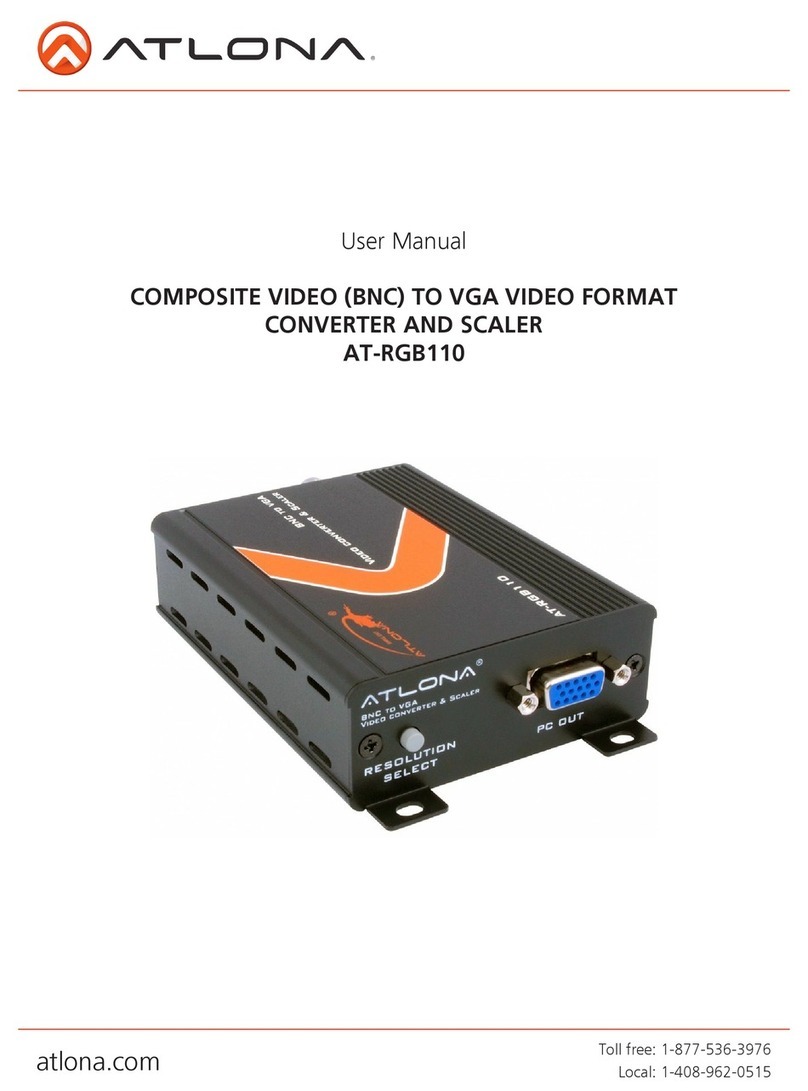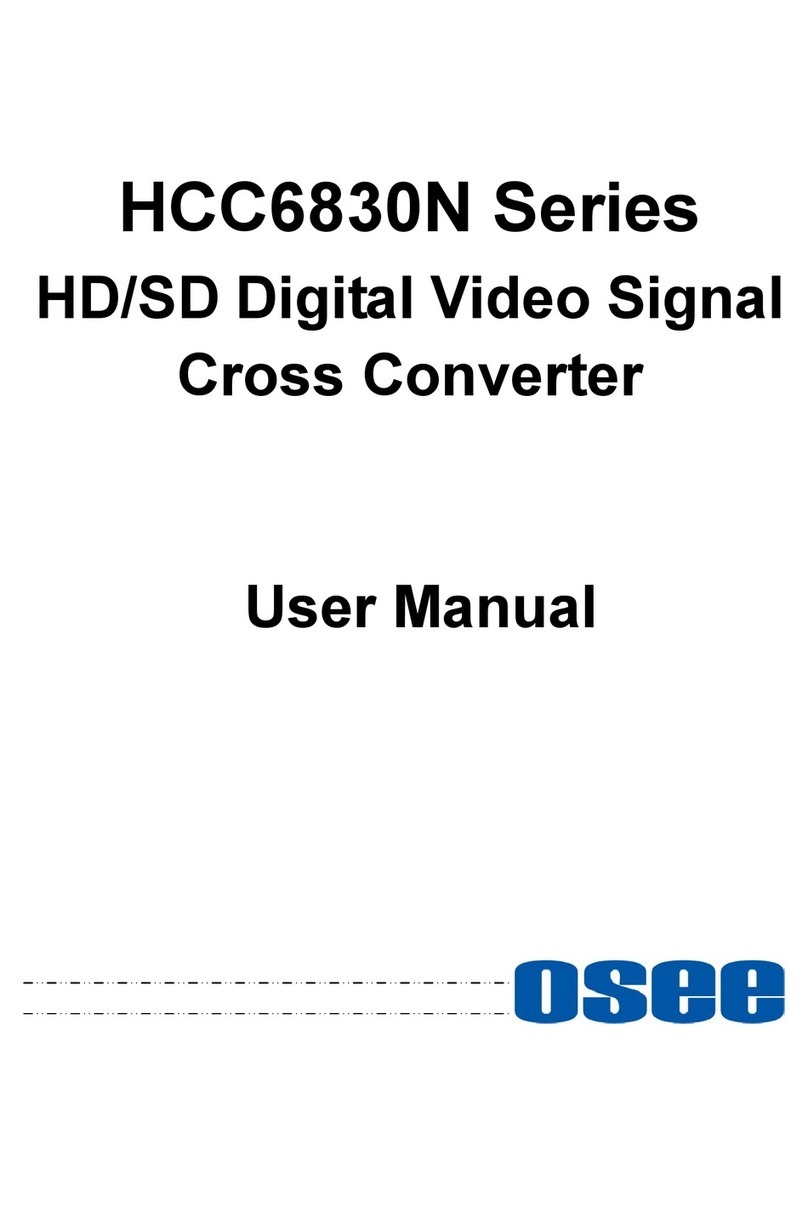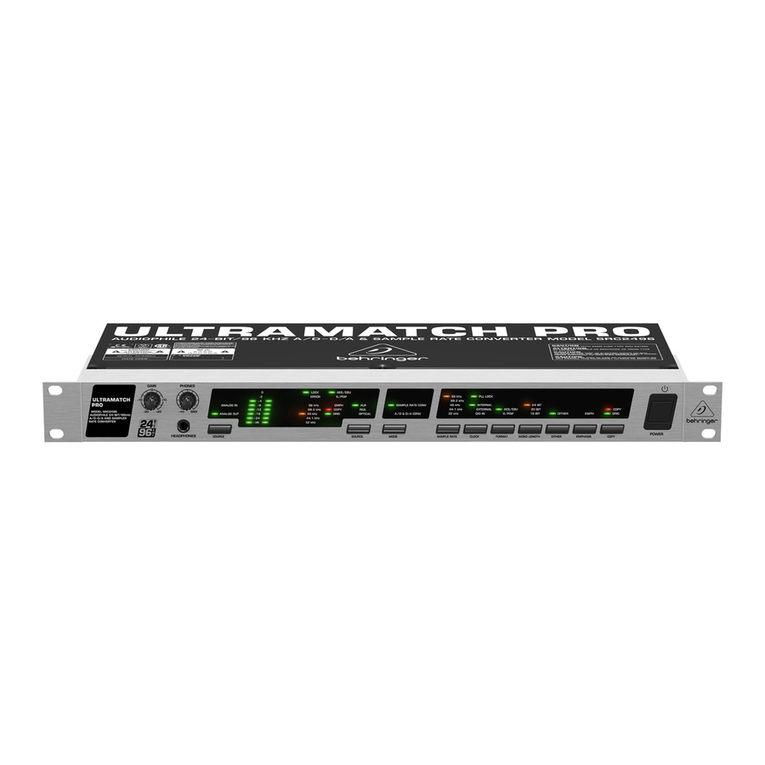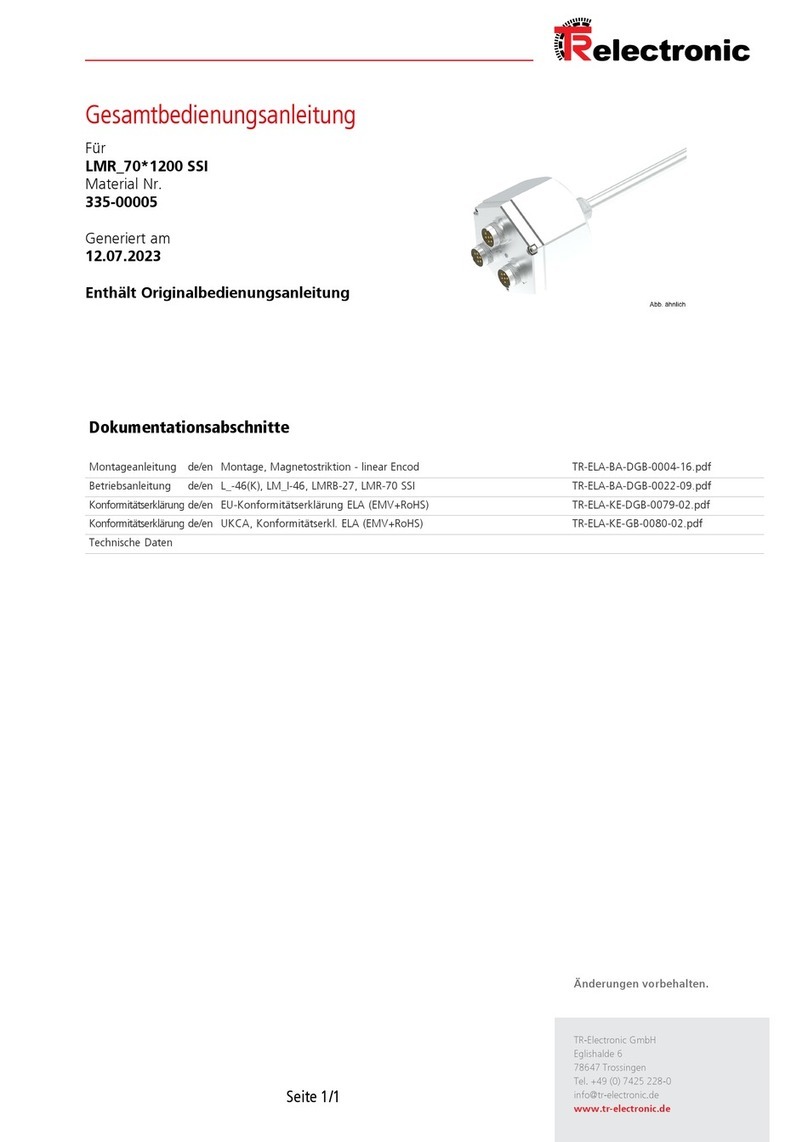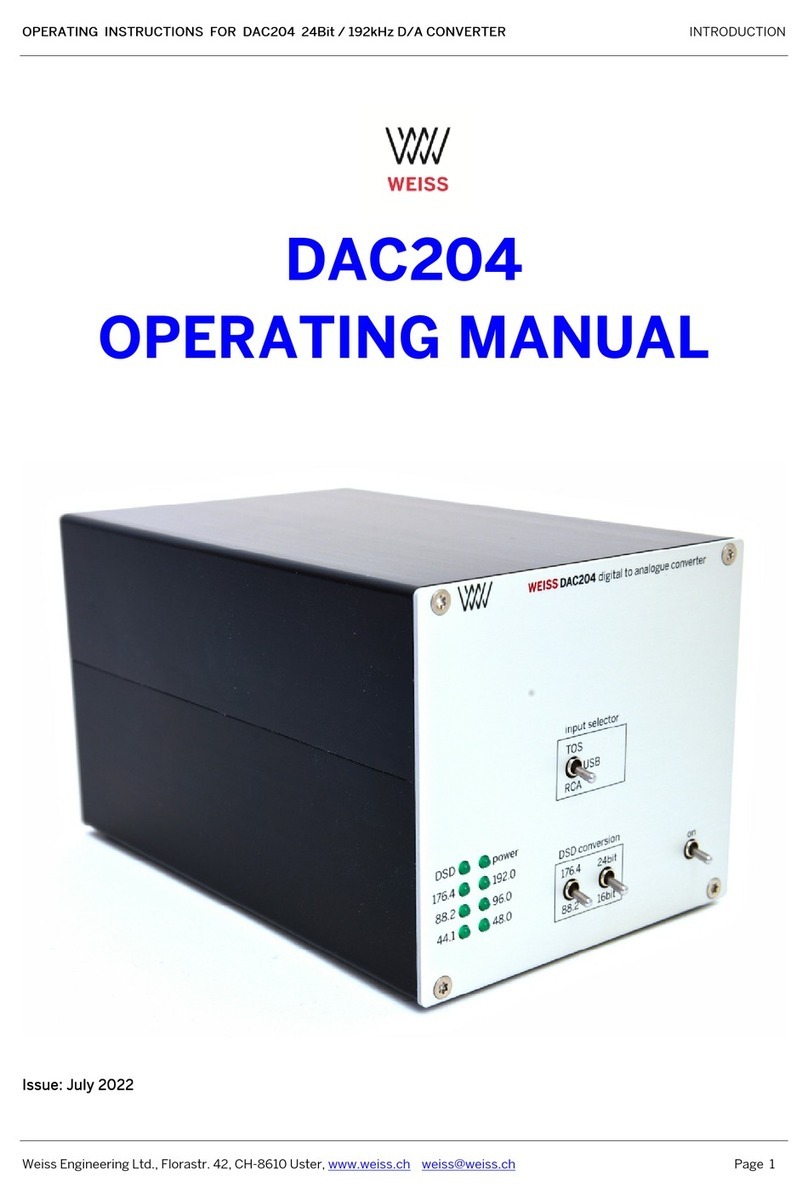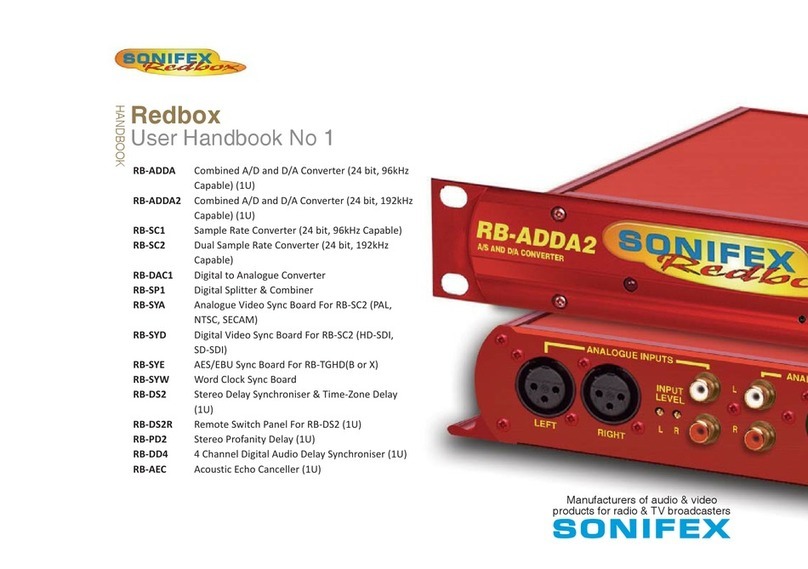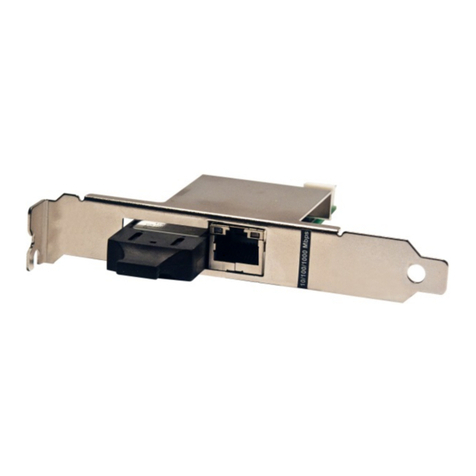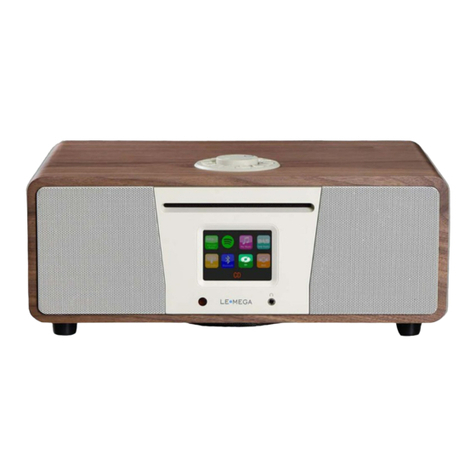Storz OR1.avm User manual

Instructions for use
OR1 .avm
Rel. 1.3
en

Copyright ©
All product illustrations, product descriptions, and texts are the intellectual property of
KARLSTORZSE&Co.KG.
Their use and reproduction by third parties require the express approval of
KARLSTORZSE&Co.KG.
All rights reserved.
12-2021

Table of contents
Instructions for use • OR1 .avm • PFU292_EN_V2.0_12-2021_IFU_CE-MDR 3
Table of contents
1 General information .................................................................................................................. 5
1.1 Read the instructions for use........................................................................................... 5
1.2 Read the instructions for use of compatible products .................................................... 5
1.3 Scope .............................................................................................................................. 5
1.4 Other applicable documents ........................................................................................... 5
1.5 Description of warning messages ................................................................................... 5
2 Normal use ............................................................................................................................... 7
2.1 Intended use.................................................................................................................... 7
2.2 Indications ....................................................................................................................... 7
2.3 Contraindications ............................................................................................................ 7
2.4 Target user populations................................................................................................... 7
2.5 Patient groups ................................................................................................................. 7
3 Safety ....................................................................................................................................... 8
3.1 Serious incidents ............................................................................................................. 8
3.2 Correct handling and product testing ............................................................................. 8
3.3 Unsterile product ............................................................................................................. 8
3.4 Contaminated products................................................................................................... 8
3.5 Combination with other components .............................................................................. 8
3.6 Dangers from electrical current ....................................................................................... 9
3.7 Damage due to ingress of liquid in electrical components ............................................. 10
3.8 Electromagnetic interference........................................................................................... 10
3.9 Failure of devices............................................................................................................. 10
3.10 Observing ambient conditions......................................................................................... 10
3.11 Data transfer .................................................................................................................... 11
4 Product description.................................................................................................................. 12
4.1 Description of function .................................................................................................... 12
4.2 Product overview............................................................................................................. 12
4.3 Possible combinations .................................................................................................... 13
4.4 Technical specifications .................................................................................................. 13
4.5 Symbols employed .......................................................................................................... 14
4.5.1 Symbols on the packaging ................................................................................. 14
4.5.2 Symbols on the product ..................................................................................... 15
4.5.3 Symbols on the type plate .................................................................................. 16
4.5.4 Product identification number ............................................................................ 16
4.6 Ambient conditions.......................................................................................................... 17
5 Preparation ............................................................................................................................... 18
5.1 Unpacking the product.................................................................................................... 18
5.2 Setting up the product..................................................................................................... 18
6 Operation.................................................................................................................................. 19
6.1 Starting the Program ....................................................................................................... 19
6.2 User interface .................................................................................................................. 19
6.2.1 Icons on the user interface ................................................................................. 21
6.3 Routing videos in the operating room ............................................................................. 22
6.4 Stopping video transmission in the OP ........................................................................... 23
6.5 Capturing images and videos.......................................................................................... 24

Table of contents
Instructions for use • OR1 .avm • PFU292_EN_V2.0_12-2021_IFU_CE-MDR 4
6.6 Creating image compositions.......................................................................................... 25
6.7 Controlling the room camera........................................................................................... 28
6.8 Selecting access status................................................................................................... 31
6.9 Streaming videos............................................................................................................. 31
6.10 Invite participant .............................................................................................................. 33
6.10.1 Access with URL and password......................................................................... 33
6.10.2 Access via email ................................................................................................. 33
6.11 Commenting on videos ................................................................................................... 34
6.12 Setting playback volume ................................................................................................. 34
6.13 Adjusting microphone...................................................................................................... 35
7 Maintenance, servicing, repairs, and disposal ......................................................................... 37
7.1 Maintaining the product................................................................................................... 37
7.1.1 Maintenance ....................................................................................................... 37
7.2 Repairing the product...................................................................................................... 37
7.3 Changing a fuse............................................................................................................... 37
7.4 Disposing of the product ................................................................................................. 38
8 Accessories and spare parts.................................................................................................... 39
8.1 Accessories ..................................................................................................................... 39
9 Electromagnetic compatibility .................................................................................................. 40
9.1 General notes on the operating environment .................................................................. 40
9.2 Accessories and cables................................................................................................... 40
9.3 Table 1 – Compliance level for immunity tests................................................................ 40
9.4 Table 2 – Test levels for proximity fields from HF wireless communications equipment 42
9.5 Table 3 – Test levels for radiated and conducted immunity tests................................... 43
9.6 Table 4 – Emission class and group................................................................................ 44
9.7 Table 5 – Recommended separation distances between portable and mobile HF
communications devices and the product ...................................................................... 44
10 Subsidiaries .............................................................................................................................. 46

General information
Instructions for use • OR1 .avm • PFU292_EN_V2.0_12-2021_IFU_CE-MDR 5
1 General information
1.1 Read the instructions for use
If the instructions for use are not followed, patients, users, and third parties may be injured or
the product may be damaged.
Read the instructions for use carefully and follow all the safety notes and warnings.
Read the reprocessing instructions carefully and follow all the safety notes and warnings.
The reprocessing instructions can be downloaded from www.karlstorz.com/ifu by entering
the item number.
Keep the instructions for use and reprocessing instructions in a safe place.
1.2 Read the instructions for use of compatible products
If the instructions for use of compatible products are not followed, patients, users, and third
parties may be injured or the product may be damaged.
Read the instructions for use of the compatible products carefully and follow all the safety
notes and warnings.
Read the reprocessing instructions of the compatible products carefully and follow all the
safety notes and warnings.
1.3 Scope
This instruction manual is valid for:
Product name Item number
OR1 .avm WO301
1.4 Other applicable documents
The following documents are a part of the product and must be observed:
– OR1.avm System Security Plan
– Regulatory information on Intel Corporation radio receiver
– AIDA instructions for use
– AIDAC instructions for use
1.5 Description of warning messages
To prevent any injury to persons or damage to property, the warnings and safety notes in the
instructions for use must be observed. The warnings use the following levels of danger:
WARNING
WARNING
Designates a possible imminent risk. If this is not avoided, it could lead to death or serious
injuries.
CAUTION
CAUTION
Designates a possible imminent risk. If this is not avoided, it could lead to minor injuries.

General information
Instructions for use • OR1 .avm • PFU292_EN_V2.0_12-2021_IFU_CE-MDR 6
NOTICE
NOTICE
Designates a possibly harmful situation. If this is not avoided, the products could be damaged.

Normal use
Instructions for use • OR1 .avm • PFU292_EN_V2.0_12-2021_IFU_CE-MDR 7
2 Normal use
2.1 Intended use
OR1.avm is a system for controlling the distribution of video data from integrated signal
sources to signal targets within the operating room with an integrated teleconference function.
2.2 Indications
Routing of audio, video, and control signals from signal sources to signal destinations in the
case of medical procedures.
2.3 Contraindications
Use is contraindicated if, in the opinion of the responsible physician, the device is not
compatible with successful completion of the planned procedure due to its technical design.
2.4 Target user populations
The medical device may only be used by doctors and medical assistants with a relevant
specialist qualification.
2.5 Patient groups
There are no restrictions in terms of patient groups for this product.

Safety
Instructions for use • OR1 .avm • PFU292_EN_V2.0_12-2021_IFU_CE-MDR 8
3 Safety
3.1 Serious incidents
A ‘serious incident’ includes incidents which, directly or indirectly, had, could have had or
could have any of the following consequences:
– Death of a patient, user, or another person
– Temporary or permanent serious deterioration in the medical condition of a patient, user,
or another person
– A serious threat to public health
The manufacturer and appropriate authority must be notified of all serious incidents.
3.2 Correct handling and product testing
If the product is not handled correctly, patients, users, and third parties may be injured.
Only persons with the necessary medical qualification and who are acquainted with the
application of the product may work with it.
Check that the product is suitable for the procedure prior to use.
Check the product for the following properties, for example, before and after every use:
– Functionality
– Damage
– Changes to the surface
Do not continue to use damaged products.
Dispose of the product properly.
3.3 Unsterile product
The product is not sterile when delivered. The use of non-sterile products poses a risk of
infection for patients, users, and third parties.
Reprocess the product in line with the reprocessing instructions before initial use and
every subsequent use.
3.4 Contaminated products
Contaminated products pose a risk of infection for users, patients, and third parties.
Comply with national laws and regulations.
Observe the guidelines of the Employer’s Liability Insurance Association and equivalent
organizations.
3.5 Combination with other components
The use of unauthorized devices and components or unauthorized changes to the product can
result in injuries.
Additional devices connected to electrical medical equipment must comply with the relevant
IEC or ISO standards. Furthermore, all configurations must comply with the requirements for
medical electrical systems (see IEC 60601-1-1 or clause 16 of the 3rd edition of IEC 60601-1).
Only combine the product with devices and components that are approved for combined
use by the manufacturer.
Only use the product in combination with AIDA, software version 1.7 or higher, and
AIDAC, software version 1.1 or higher.

Safety
Instructions for use • OR1 .avm • PFU292_EN_V2.0_12-2021_IFU_CE-MDR 9
Only use approved accessories.
The product should not be used immediately adjacent to or stacked with other equipment.
If adjacent or stacked use is necessary, the product should be observed to verify normal
operation in the configuration in which it will be used.
Only use devices and components that have standardized interfaces and do not breach
the intended use of the product.
Observe the instruction manuals and interface specifications of the devices and
components used in combination.
Only use devices with display capability that are identified as "display".
Comply with national and local regulations.
Only make changes to the product if these changes are approved by KARLSTORZ.
3.6 Dangers from electrical current
An improper power supply may cause an electric shock and injure patients, users, or third
parties. All electrical installations of the operation room in which the product is connected and
used must meet the applicable IEC standards.
Use either the power cord supplied by KARLSTORZ or a power cord which has the same
properties and which bears a national mark of conformity.
Have the device installed and put into service by authorized and trained electricians of
KARLSTORZSE&Co.KG or by companies authorized by KARLSTORZ.
The product may only be operated with the line voltage stated on the rating plate.
Position the product appropriately so that the power cord can be unplugged at any time.
The product is only voltage-free when the mains plug has been disconnected.
The product’s ground line should be installed by a qualified electrician.
Ensure potential equalization according to the applicable national rules and regulations.
To ensure reliable protective earth grounding, connect the product to a properly installed
socket that is approved for use in the operation room. Routinely inspect the electrical plug
and cord and do not use if the inspection reveals damage.
Connect the product to a power supply with protective conductor.
Do not use any additional freely accessible multiple socket outlets or extension cables.
Multiple socket outlets must not be placed on the floor.
In the case of electrical products, individual components or the product itself may be live. Live
parts can cause electric shocks in the event of contact and injure patients, users, and third
parties.
Do not open the product.
Have servicing carried out by KARLSTORZ or a company authorized by KARLSTORZ.
Failure to do so will void the guarantee.
Do not touch the output jacks of the product and the patient at the same time during use.
Always pull out the mains plug before carrying out any cleaning and maintenance work.
During use, explosive anesthetic gases are used. If sparks occur, this may trigger explosions.
Only connect or disconnect the power plug to or from the power supply outside explosive
atmospheres.

Safety
Instructions for use • OR1 .avm • PFU292_EN_V2.0_12-2021_IFU_CE-MDR 10
3.7 Damage due to ingress of liquid in electrical
components
In the case of electrical products, individual components or the product itself may be live.
Liquid ingress into an electrical product may result in a short circuit or an unintentional transfer
of current. The product is damaged as a result and patients, users and third parties may be
injured.
Do not store liquids near the product or on the product.
If liquid has entered the product, pull out the plug and allow the product to dry completely.
3.8 Electromagnetic interference
Medical electrical devices are subject to special precautions regarding electromagnetic
compatibility and must be installed and commissioned according to the tables on
electromagnetic compatibility. If other products (e.g. for MRT, CT, diathermy, electrocautery, or
RFID) emit electromagnetic radiation, the function of the product may be impaired. High-
frequency communication equipment can affect medical electrical devices and impair their
performance.
Do not use the product in the vicinity of a magnetic resonance tomograph (MRT).
Do not use the product next to or together with other devices. If such use is required,
monitor the product and the other devices, and follow the relevant instructions for use in
the event of malfunctions.
Portable RF communications equipment including peripheral devices (e.g., antenna cables
and external antennas) should be used no closer than 30cm from the product, including
cables specified by the manufacturer.
Observe the information on electromagnetic compatibility, see chapter
Electromagnetic
compatibility
[p.40].
In case of uncertainties, seek expert advice from KARLSTORZ.
To prevent increased electromagnetic emissions or reduced electromagnetic immunity of
the product, only use accessories, transducers, and cables recommended or supplied by
the manufacturer.
In order to avoid exposing patients, users, or third parties to harmful electromagnetic
interference, the product must not be operated outside of its intended EMC environment.
Furthermore, the product must not be operated if the housing, cable, or electromagnetic
shielding equipment is damaged.
3.9 Failure of devices
The product may fail during use. In this case, image transmission will be interrupted. The
patient may be injured.
Always have a backup system (direct line between endoscopic camera and monitor) ready.
In case of a failure or malfunction, cease work immediately and switch to a backup
system.
Prior to each operation, make sure that the personnel are familiar with the procedure for
switching over to the backup system.
Have a replacement product ready for each application or plan for an alternative surgical
technique.
3.10 Observing ambient conditions
If the device is operated in an environment which is not suitable, patients, users and third
parties may be injured.

Safety
Instructions for use • OR1 .avm • PFU292_EN_V2.0_12-2021_IFU_CE-MDR 11
Always operate the product in the prescribed ambient conditions.
When using explosive narcotic gases: Operate the product outside of the hazard zone.
Do not use the product in the presence of flammable anesthetics.
The product must not be operated in oxygenated environments.
3.11 Data transfer
If incompatible signal types are connected to the video connections of the product, image
errors and malfunctions may occur. Sudden system shutdown leads to data loss.
Only connect the specified signal types and test the system before use.
Take measures that prevent any sudden system shutdown.

Product description
Instructions for use • OR1 .avm • PFU292_EN_V2.0_12-2021_IFU_CE-MDR 12
4 Product description
4.1 Description of function
The OR1.avm allows up to 8 image sources and image targets to be selected for transmission
within the operating room. Furthermore, "Picture in Picture" (PiP) as well as "Picture and
Picture" (PaP) displays are possible. Streaming allows videos to be transmitted externally,
audio comments to be sent bidirectionally, and videos to be commented visually. The drawings
in the operating room are only displayed in the preview and disappear after approx.
10seconds.
4.2 Product overview
41 2 3
OR1.avm – Front view
1 Power switch 3 LED, green, ON status
2 LED, orange, standby 4 USB port
11 435
6
78
9
10
21
OR1.avm – Rear view
1 Video outputs 7 LAN connections
2 Video inputs 8 DP connections
3 Audio In 9 Potential equalization connector
4 Audio Out 10 Power cord socket
5 USB ports 11 Power fuse holder
6 ACC connections

Product description
Instructions for use • OR1 .avm • PFU292_EN_V2.0_12-2021_IFU_CE-MDR 13
4.3 Possible combinations
It is recommended that the suitability of the products for the planned procedure be checked
prior to use. Please note that the products listed here may not yet be available in all countries
due to differences in approval requirements.
The product can be combined with the following components:
Product name Item number
AIDA, software version 1.7 or higher WD300
AIDAC, software version 1.1 or higher WD310
4.4 Technical specifications
Interfaces
Video inputs 5x 12G SDI
3x HDMI 2.0
Video outputs 6x 12G SDI
2x HDMI 2.0
USB 4x USB 3.0
1x USB 2.0
LAN 2x Ethernet
Audio 1x Audio in
1x Audio out
Remote control 2x ACC
Power supply
Power supply (AC) 100–240V
Operating frequency 50/60Hz
Line fuse 2x T 5A 250V, 5 x 20mm BK/S506-5-R
Max. input current 2.5A (@100VAC), 1A (@ 250VAC)
Operating mode Continuous operation
Housing
Degree of protection acc.
to IEC 60259
IPx0
Electrical protection class I
Dimensions (LxHxW) 355 x 74.5 x 305mm
Weight 4kg

Product description
Instructions for use • OR1 .avm • PFU292_EN_V2.0_12-2021_IFU_CE-MDR 14
Radiofrequency transmission
Frequency bands in oper-
ation
2.4GHz and 5GHz bands
Operating frequency 2,400–2,485MHz
5,150–5,250MHz
5,250–5,350MHz
5,470–5,725MHz
5,725–5,875MHz
Channel spacing/band
width
2.4GHz: 802.11 b/g/n: 5MHz / BT: 1MHz
5GHz: 802.11 a/n/ac: 20, 40, 80, 160MHz
Radiofrequency output en-
ergy
20dBm (2,400–2,485MHz) IEEE 802.11 b/g/n & BT
10dBm (2,400–2,485MHz) BLE
23dBm (5,150–5,725MHz) IEEE 802.11 a/n/ac
13.98dBm (5,725–5,875MHz) IEEE 802.11 a/n/ac
Type of modulation 2.4GHz: DSSS/OFDM/FHSS
5GHz: OFDM
The OR1.avm contains a lithium battery that needs to be checked and replaced
regularly.
4.5 Symbols employed
4.5.1 Symbols on the packaging
Symbol Meaning
Manufacturer
Date of manufacture
Medical device
Article no.
Serial number
Number of products in the product packaging
Unique Device Identifier
Consult the printed or electronic instructions for use

Product description
Instructions for use • OR1 .avm • PFU292_EN_V2.0_12-2021_IFU_CE-MDR 15
Symbol Meaning
Fragile, handle with care
Keep dry
Temperature limit
Humidity limit
Air pressure limit
Federal (USA) law restricts this device to sale by or on the order of a
physician.
CE marking
With this marking, the manufacturer declares the conformity of the prod-
uct with the applicable EU directives. A code number after the CE mark
indicates the responsible notified body.
The EU directives relevant to the product can be found in the EU Decla-
ration of Conformity, which can be requested from KARLSTORZ.
4.5.2 Symbols on the product
Symbol Meaning
Follow instructions for use
Ready/standby button
ON
USB
Potential equalization connector

Product description
Instructions for use • OR1 .avm • PFU292_EN_V2.0_12-2021_IFU_CE-MDR 16
4.5.3 Symbols on the type plate
Symbol Meaning
Manufacturer
Medical device
Date of manufacture
FCC label
Non-ionizing electromagnetic radiation
Separate collection of electrical and electronic devices.
Do not dispose of in household refuse.
Test mark for electromagnetic compatibility
Environmental protection use period of 10 years (China RoHS)
CE conformity mark:
With this mark, the manufacturer declares thecompliance of the prod-
ucts with the applicable standards and directives. A code number after
the CE mark indicates the responsible notified body.
4.5.4 Product identification number
The product identification number (unique device identification, UDI) is used for uniform
identification of medical devices throughout the world.
1
2
3
1 Global item number (GTIN) 3 Item number
2 Serial number

Product description
Instructions for use • OR1 .avm • PFU292_EN_V2.0_12-2021_IFU_CE-MDR 17
4.6 Ambient conditions
Storage/transport conditions
Temperature -10°C...+60°C (14°F...140°F)
Relative humidity
(non-condensing)
10–90%
Air pressure 500–1,080hPa
Operating conditions
Temperature 0°C...40°C (32°F...104°F)
Relative humidity
(non-condensing)
10–90%
Air pressure 700–1,080hPa
Max. operating altitude 3,000m

Preparation
Instructions for use • OR1 .avm • PFU292_EN_V2.0_12-2021_IFU_CE-MDR 18
5 Preparation
5.1 Unpacking the product
1. Carefully remove the product and accessories from the packaging.
2. Check the delivery for missing items and evidence of shipping damage.
3. In the case of damage, hidden defects, and short deliveries, document their nature and
extent and contact the manufacturer or supplier immediately.
4. Keep packaging for further transport.
5.2 Setting up the product
WARNING
Overheating! Risk of fire!
Insufficient ventilation can cause an internal build-up of heat, resulting in a safety shut-down. If
the product overheats, there is a risk of fire. Patients, users, and third parties may be injured.
Ensure that there is sufficient air circulation.
Keep air inlets and outlets free.
1. Set the product on a horizontal, flat surface or a video cart.
2. Ensure that the ambient conditions are observed.
3. Install the product out of reach of patients.

Operation
Instructions for use • OR1 .avm • PFU292_EN_V2.0_12-2021_IFU_CE-MDR 19
6 Operation
6.1 Starting the Program
The OR1.avm is used in combination with the AIDA system and can be started from the start
screen of the AIDA system or from the Workflow bar.
When the AIDA system is switched off, the OR1.avm automatically shuts down, and
routed video signals are switched off.
1. Switch on the OR1.avm.
ðThe AIDA start screen appears.
2. In the Control area, select the Routing view. If Routing is gray, the OR1.avm is not
available.
ðThe user interface of the OR1.avm appears.
3. If any other screen appears, tap the Routing button in the Workflow bar.
ðThe user interface of the OR1.avm appears.
6.2 User interface
The user interface of the OR1.avm is subdivided into the following areas:

Operation
Instructions for use • OR1 .avm • PFU292_EN_V2.0_12-2021_IFU_CE-MDR 20
4
1
2
3
5
6
1 Sources 4 Preview
2 Composed Picture 5 Targets
3 Streaming 6 Capture
Sources
Up to 8 image sources can be connected to the OR1.avm. Only connected devices appear as
sources in the user interface.
The following devices, for example, can be sources:
– Endoscopic camera
– Room camera
– PC
Composed Picture
In the Composed Picture area, videos from 2 sources can be displayed as PiP or PaP. The
composite image is displayed in the preview.
Streaming
The streaming function allows one source to be selected and transmitted outside the operating
room. The transmitted image can be commented on with the aid of a drawing function and
details can be highlighted with an arrow function. Drawings disappear automatically after
approx. 10seconds and are not saved. Audio comments can be sent bidirectionally with the
streaming function. The stream can be defined as a target in order to capture and archive the
video, for example, with the AIDA system.
Preview
WARNING
Incorrect diagnosis! Risk of injury!
The components and monitors of the OR1.avm are not diagnostic or therapeutic devices.
The preview of the OR1.avm is not to be used for diagnostic or therapeutic purposes.
A selected source, the composed picture, or the streaming function can be displayed in the
preview.
This manual suits for next models
1
Table of contents
Popular Media Converter manuals by other brands
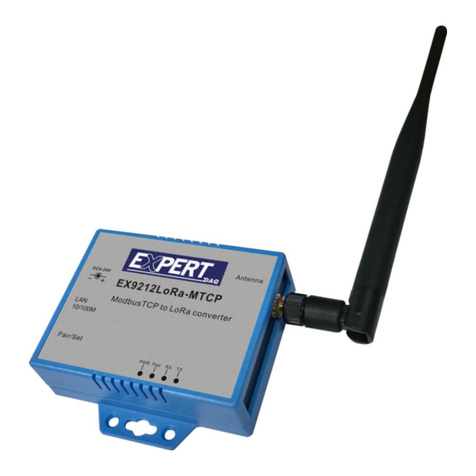
ExpertDAQ
ExpertDAQ EX9212LoRa Series user manual
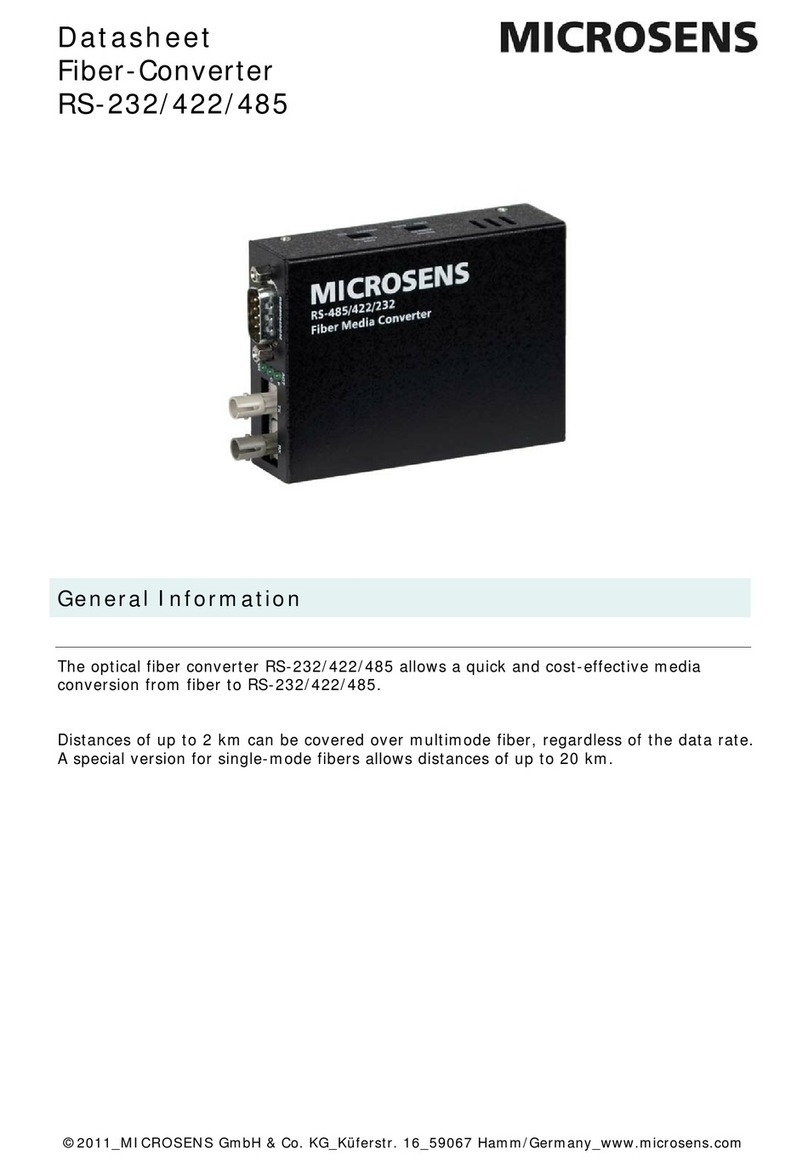
Microsens
Microsens MS400131-V2 datasheet

Manson Engineering Industrial
Manson Engineering Industrial SDC-5330 user manual

Edco
Edco ALR Installation & operator's instruction manual

Audizio
Audizio Prato instruction manual
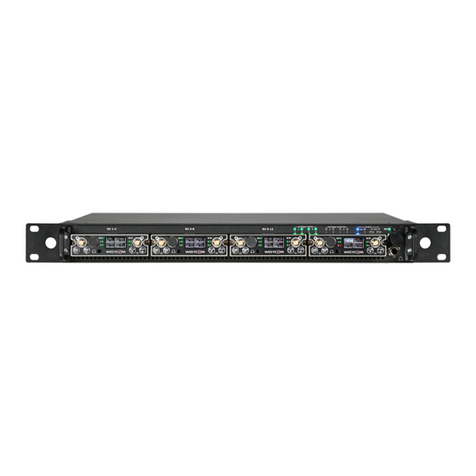
WisyCom
WisyCom MRK16 Quick user guide


